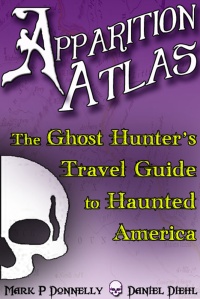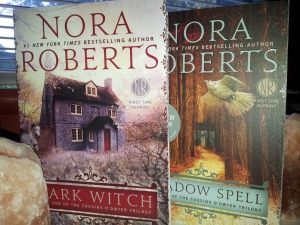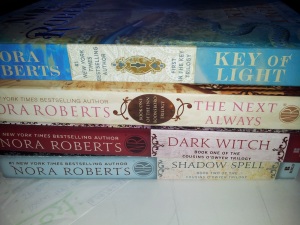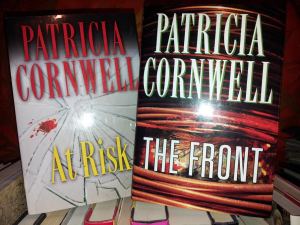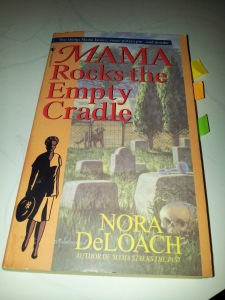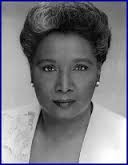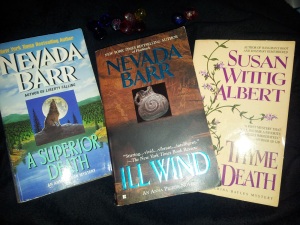Ravenswood Publishing Presents
Apparition Atlas by Mark. P. Donnelly & Daniel Diehl
Title: Apparition Atlas
Author: Daniel Diehl & Mark P. Donnelly
Genre: Paranormal/Non-Fiction/Travel
Length: 540 pages
Release Date: September 1, 2015
ISBN-13: 978-1515263166
IMPRINT: Gaia’s Essence
SYNOPSIS: Have you ever had an encounter with a ghost? Would you like proof that the deceased continue to visit the world of the living? Do you have the courage to stand face-to-face with visitors from the afterlife?
Apparition Atlas: The Ghost Hunter’s Travel Guide to Haunted America provides seekers of truth with a definitive guide to more than 200 publicly accessible, verified haunted locations in all fifty states. Introductory chapters discuss the many different types of apparitions and explain everything the novice ghost hunter needs to know to search for things that go bump in the night.
Sometimes the spirits of the dead manifest themselves by slamming doors or through blood chilling screams; other times they come as glowing orbs of ectoplasm that float through walls, and occasionally they appear in their human form–fully formed, semi-transparent and terrifyingly real. Let us take you on a journey to places where close encounters with the departed occur with frightening regularity.
Guaranteed to make you doubt everything you believe about death being the end of existence.
What is a Ghost?
While working on our new, nonfiction book, Apparition Atlas: The Ghost Hunter’s Travel Guide to Haunted America my co-author, Mark Donnelly, and I came across this provocative quote by noted horror writer Peter Straub:
“Considering that sooner or later everybody is going to die, people know surprisingly little about ghosts.”
Not until the moment we saw this thought-provoking statement had we considered examining the precise nature of spirit manifestations and including the information in the book. What we learned is both surprising and enlightening and we think it is worthwhile passing it on to our readers as an independent article. In our book, Apparition Atlas: The Ghost Hunter’s Travel Guide to Haunted America, this short chapter precedes an examination of the tools and techniques used by ghost hunters. Following these two explanatory chapters we lead our readers through a cornucopia of more than 200 publicly accessible – and eminently creepy - haunted houses scattered across all fifty states in the US. But for the moment we will limit ourselves to our investigation into the nature of spirits and hauntings. Here, then, is what we found out:
* * * * *
Since we are going to spend the remainder of this book talking about ghosts we should probably take just a minute to define exactly what we mean when we say ‘ghost’. According to Webster’s Seventh New Collegiate Dictionary, the word ghost is defined as: ‘a disembodied soul; especially the soul of a dead person believed to be an inhabitant of the unseen world or to appear to the living in bodily likeness’. Well, that seems like a reasonable starting point, but since there are a great number of apparitions described in the following entries, I think we need to consider the definition of the term ghost in a little greater depth.
Paranormal research tells us that there may be many different kinds of supernatural phenomena commonly referred to as ‘ghosts’ and we must consider this fact when we read the more than two hundred stories of hauntings covered in this book. The simple fact is, it would seem difficult for any one type of spirit to manifest itself in the dozens of different ways described in the following pages. So let’s take a look at each of the many forms of ghostly activity and try to explain them or, if not explain them, at least categorize them by type and try to offer some possible explanations for what they are and why they behave like they do.
Are ghosts conscious? This question lies at the heart of our attempts to understand the appearance and activities of the manifestations we refer to as ghosts. While it is undeniable that there are instances where those in the spirit world seem to communicate directly, and in real time, with the living, we must consider the probability that the vast majority of spirit manifestations are nothing more than reflections; echoes of energy patterns left behind by individuals that have left the world of the living. Those instances where ghosts are reported to communicate directly with the living are notably rare. Even those occasions where physical manifestations (ghosts that appear in more-or-less their human form) may appear to look at the living and smile or nod, or instances where disembodied voices speak, are probably nothing more than an unconscious repetition of something the individual did or said while they were alive. The most common explanation for this particular phenomenon is to describe it as a psychic impression of a particular event, or a moment in time, which is then replayed at random intervals much like a tape loop or a clip from an old movie. It is highly unlikely that the individuals who appear in this type of spirit manifestation are aware of the living. In all probability they have no consciousness of any kind and are no more ‘real’ than the characters we see when we watch a movie; rather, they are simply patterns of light and dark, endlessly replaying a scene from some long-ago storyline, without having any sense of self awareness, let alone an awareness of their surroundings.
This ‘echo’ theory would also account for why ghosts seem to fade out over a period of years or centuries. Consider that ghosts from the relatively recent past – say the last century or two – are fairly common but those from a thousand or two thousand years in the past are extremely rare. The authors are, in fact, only aware of one verified haunting from the period of the Roman Empire, that being a column of roman soldiers (in full military regalia, some mounted on horses) which have been seen marching through the crypt beneath Yorkminster Cathedral in York, England. If, indeed, this type of spirit apparition is an echo of past people and actions then, like the echo of a voice shouted toward a hillside, they will eventually fade away, becoming fainter and fainter, until they eventually disappear entirely.
What this theory does not account for are those rare instances where ghosts - either fully formed and human in appearance or those which exist only as a disembodied voice - communicate directly with the living, conversing with them as though they were living people. For this rare and fascinating phenomenon we have no theories to offer. It is, however, simultaneously comforting to think that conscious life may continue after death, and also slightly unsettling to consider that at least some of the dead are capable of interacting with the world of the living.
The most common physical phenomena attributed to those from the afterlife are actions such as slamming doors, moving small objects, turning lights on and off and other startling but generally harmless interactions with the solid world of the living. Most such physical activities are attributed to a type of phenomenon known as a ‘poltergeist’. Translated from the German, poltergeist literally means ‘noisy ghost’. While some poltergeist activities can be extreme and terrifying, most of them are completely harmless, if sometimes annoying. The dangerous kind of poltergeist activity, where furniture flies across the room and humans are beaten or bitten by unseen assailants, generally only takes place in households where there is a human female around the age of puberty. We have no idea why teenage females seem to attract – or trigger – this type of activity, and it is not universally true, but it has been recorded as a frequent accompaniment of the poltergeist phenomenon. No one has even made a positive link between poltergeist activity and the appearance of ghostly images in human form; they may be a completely separate phenomena which may, or may not, take place in the same location. What is certain is that no visible ghost – that is, a ghost which has taken on its former, human form – has ever been seen to move a physical object. This may prove nothing more than the fact that interacting with the physical world, while simultaneously manifesting a physical presence, requires more energy than a spirit can muster, but it may also be that hose things which move objects are an entirely different type of manifestation than the spirits which take on their former physical appearance.
In many instances the presence of ghostly activity includes sightings of glowing balls, often referred to as ‘orbs’, that flit or float through buildings or, on rare occasions, across the out-of-doors landscape in the proximity to a haunted building. As is true with poltergeists, we are uncertain whether these orbs are directly related to ghosts or if they are some other type of activity entirely, which simply happen to take place at the same locations where ghosts may be in residence. Similarly, we have no idea what these energy orbs are, what causes them or whether they are in any way aware of the world of the living.
In many instances ghosts make their physical appearances in the world of the living at predictable locations in the architectural landscape. Primary among these are stairways, doors, hallways, windows and, most disturbingly, mirrors. There is a popular theory that these passageways, or openings, in the physical world also serve as openings into the world of the spirits. Whether this is true, or whether it just happens that most houses tend to have a lot of doors, windows, staircases and hallways and therefore ghosts seem to be attracted to them, is open to question. In either case, it is an interesting, and somewhat unsettling, theory.
What Does a Ghost Hunter’s Guide Look Like, Anyway?
It’s a little difficult to explain to our readers exactly what we mean when we say that our latest nonfiction book, Apparition Atlas: Ghost Hunter’s Travel Guide to Haunted America. The easiest explanation is that it is laid out a lot like any travel guide published by the major travel companies such as Michelin or Fodors, except for the fact that instead of describing and rating hotels, motels, B&Bs, restaurants and other tourist facilities, it guides the reader to more than 200 publicly accessible haunted houses located in all 50 states. Like any good travel guide each site is described – both its history and current operation – and contact information is given to ease the traveler in locating, and making arrangements to visit, each particular site. Additionally, in the same way that the people at Michelin rate restaurants and hotels by granting them anywhere from one to five crowns, we rate the ‘fear factor’ of our sites by granting them from one to five skulls. We believe that this will help prepare our readers for how likely they are to be freaked out by what they just might encounter on their travels. To enlighten you as to just what these entries look like, here is one sample page from the more than 200 included in Apparition Atlas: The Ghost Hunter’s Travel Guide to Haunted America.
AUTHOR INFORMATION & LINKS
Daniel Diehl - Daniel Diehl has been an author, writer and investigative historian for thirty-five years. For nearly twenty years Diehl has been involved in writing for publication and documentary television production. Mr. Diehl’s work has won awards from the Houston (Texas) Film Festival, the National Trust for Historic Preservation (US) and the City of Pittsburgh, Pennsylvania Arts Foundation. Working alone and as a part of the multi-award winning team of Daniel Diehl and Mark Donnelly, Diehl has produced work in two main categories; trade publication and television documentary scripts. His canon of work includes twenty non-fiction books (which have been translated into ten foreign languages), one previous work of fiction and scripts for more than one hundred and seventy hours of documentary television primarily for A&E Network, The History Channel, History International, Biography Channel and Discovery Network.
Mark P. Donnelly - Mark P. Donnelly is an historian, author, screenwriter, duelist, bon vivant, and constant gentleman. He has authored, co-authored or ghost written over 20 titles in several countries and has scripted and/or produced nearly 200 hours of historical television programming. He can frequently be found traveling throughout the north-eastern US giving lectures and presentations at themed events as well as teaching historical swordsmanship and western martial arts. He currently resides in central Pennsylvania where he enjoys life with his wife and family.
Currently Available at:


